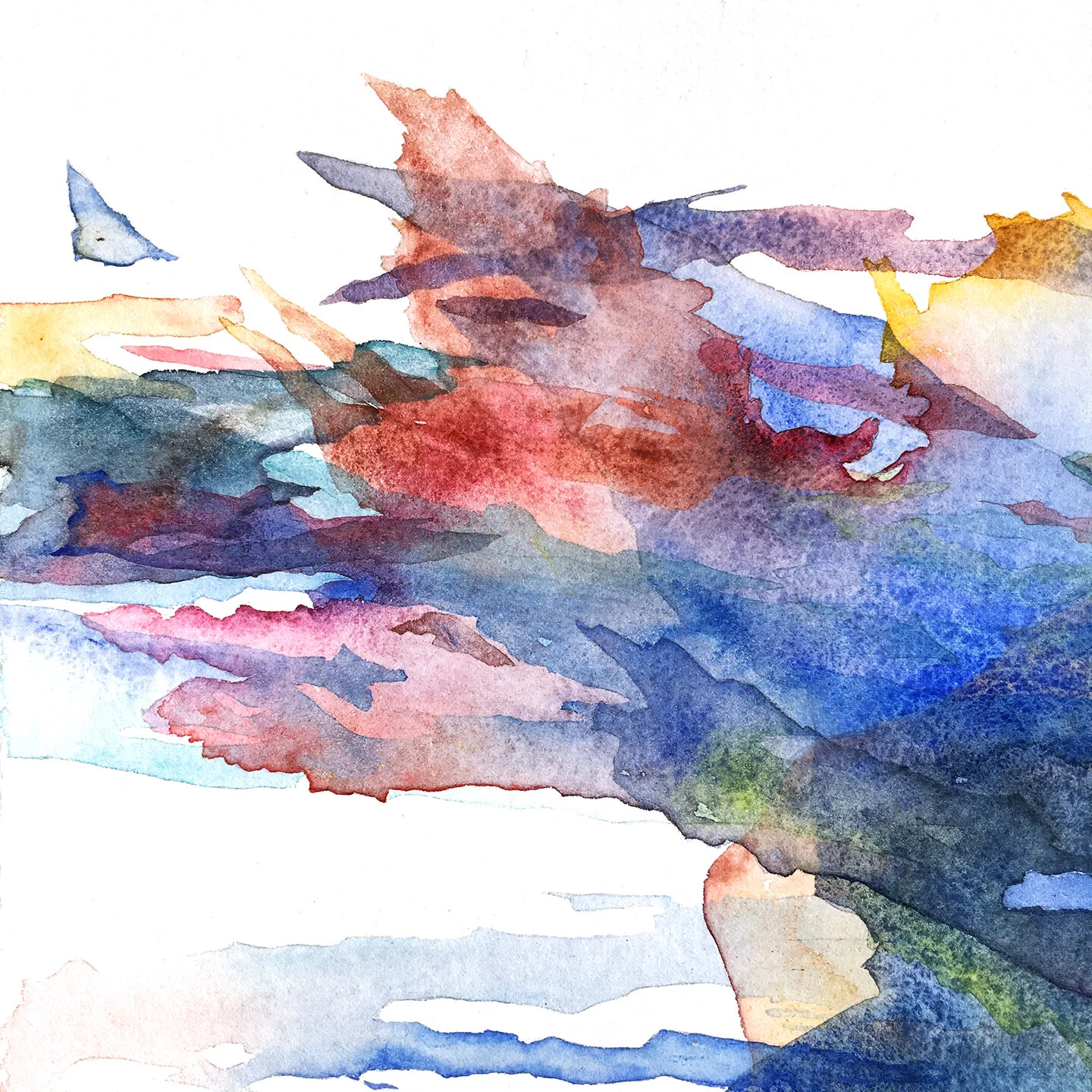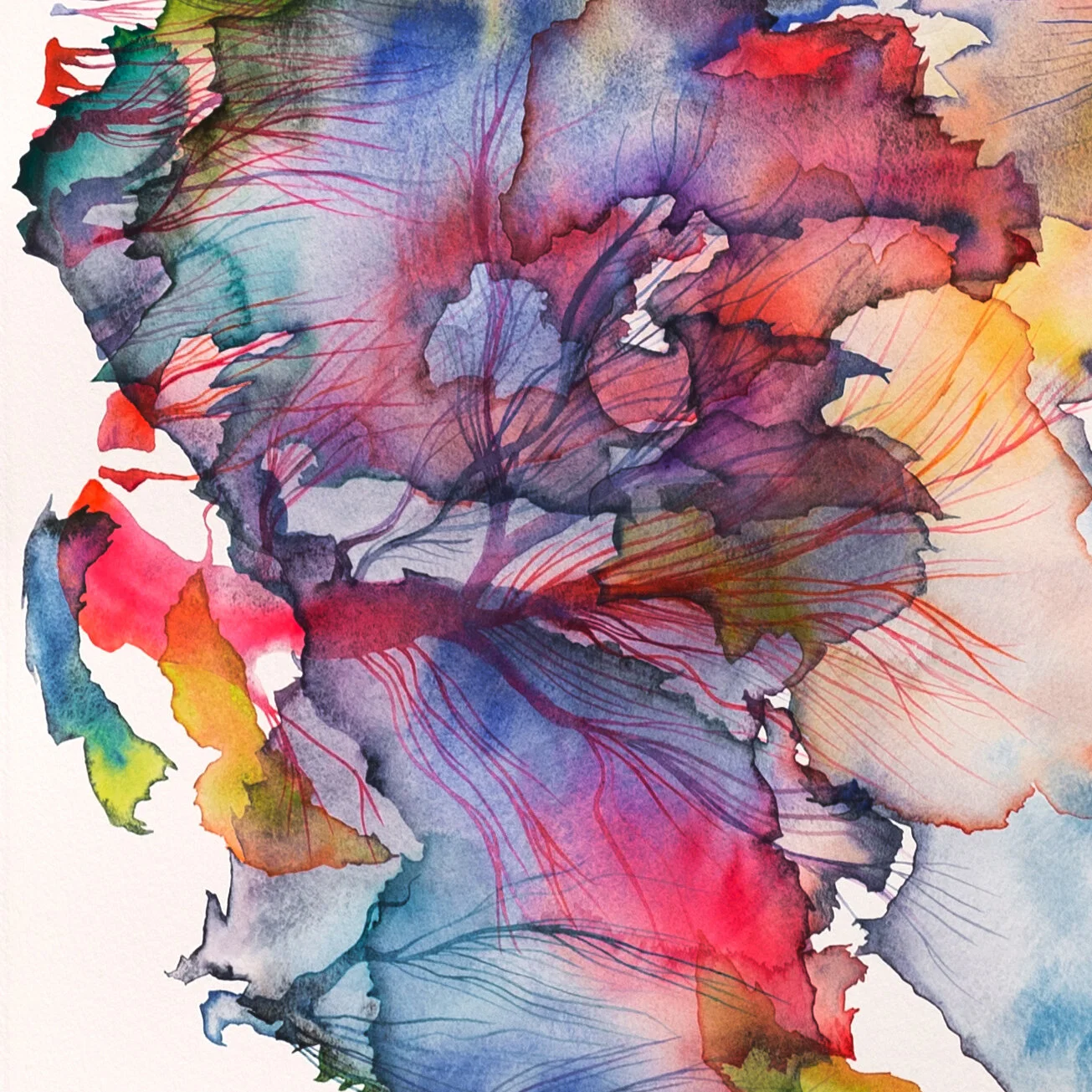Abstract Expressionism is a genre of art has historically been engaged to articulate the complexities of modern society. Those social complexities include but are not limited to war, pandemics, environmental degradation and political unrest. Such wicked issues are too elaborate to grasp within a figurative form; therefore, abstractionism forms the contextual themes of a post-2020 society.
Emerging from World War II and into the Cold War era, the history of Abstract Expressionism is densely white male dominated, at least in the United States. This narrowed identity has limited the contextual depth of this genre to a homogenous societal perspective that visually narrates that time in history from the white male gaze. Jackson Pollock, Mark Rothko, Franz Kline and a host of other white men continue to represent the classic defining artists of this genre. The expressions of Abstract Expressionism reflected a society processing the collective trauma of war yet the context of this work is void of emotion or deeper humanness, taking the route of ‘avant garde’ as the defining element of this emotive practice. “Anxiously aware of human irrationality and vulnerability, these young artists wanted to express their concerns in a new art of meaning and substance”[i]. When taken on through the bodies of the socially marginalized or the ‘global majority’ the bond between the human experience and art generates stories with greater depth.
DANIELA MOLNAR
Daniela Molnar is an American visual artist who attempts to draw attention to climate change and shape an often-abstract issue. Molnar’s process includes projecting images she obtains from NASA satellite images and data-based projections of melting glaciers in Greenland. The image projects onto her canvas, revealing obscure yet repetitive shapes and figures. She then paints using crushed rocks mixed with gum arabic—a binder—and water from the rain barrel in her garden[i]. Molnar envisions how climate change is reshaping our planet and our “embodied experience of it” through her work[ii]. In her latest series New Earth 2020-2021, Molnar paints, using her fingers, with translucent, often iridescent pigments that morph between shades of yellow, green, teal, indigo, purple and red. This 21 image series encompasses a range of translucent palettes appear as complex shapes and figures made from watercolor. The shapes are vibrant and beautiful 2D rendering of the glaciers themselves; she pulls from an archive of scientific studies and satellite images. To learn that these images are made from rainwater and a mostly organic homemade inventory of supplies brings New Earth full circle as she facilitates ecologically sustainability within her own practice. This ecological practice is a conscious effort in which the artist demonstrates her will to not only produce by do so responsibly. Does the practice of creating one’s own media create a deeper connection between the artist and her subject? Would her work and the message behind these fading landscapes she captures hold as much integrity if she did not practice this stewardship?
“The shapes in the paintings map newly exposed ground near glaciers. This is land that used to be permanently covered by a glacier that is now uncovered. This new earth is like a wound, or new, delicate skin that has formed over a wound and is now (ready or not) exposed to the world” ii. Molnar’s work is a mixture of site specificity, landscape painting, and Abstract Expressionism all in which she creates with natural or organic material. Molnar began New Earth as an attempt to explain climate change through sensory experience, to make it more real by making it visible. Taking on this challenge she discovered that this series generated a range of unexpected emotions providing both clarity and confusion. “The project isn’t just a way to convey information...It’s a way to confront grief ii.” In an interview with Los Angeles Times, the artist described her paintings of vanishing ice of glaciers as what it feels like to try to hold the daunting losses brought on by climate change [ii]. As the new era of climate crisis emerges, and more awareness around climate change builds, artists will likely engage this topic as a point of reference to one of the most pressing issues of our time.
Through this exploration of environmental reflection, the genre of Abstract Expressionism articulates an emotive and subconscious response to change that is beyond human control. Daniela Molnar responds to this shift with visual grief that bleeds into the paper as colorful tears, creating disappearing landscapes that become ghostly representations of our near future. I’m reminded of Gillian Rose’s mention of psychoanalysis in Visual Methodologies with Molnar’s. “ Psychoanalysis argues that understanding emotional reactions to, let's say, visual images requires the recognition that not all of those reasons are working at wholly conscious level” [i]iv. The visceral nature of Molnar’s work evokes emotion for the creator, however; how does that translate into the mind of the viewer? The context of climate change within the practice of site-specificity defines the era of Molnar’s work, creating a relationship between her lived history and collective observation of modern history. This defining context, separates her from the male-dominated historical giants that defined Abstract Expressionism, who’s intentions were defined by institutions such as MOMA. Molnar’s work is archival in nature as it documents the gradually disappearing landscapes of modern society, she positions the viewer into a state of environmental consciousness that removes the cold, objectivity of climate change from politics and headlines into the creative realm of color, abstraction and visual collage. Perhaps there is beauty in this shift from one planet to the one just on the horizon of human disaster and geological evolution.
New Earth 1
Watercolor on paper
22 x 36″
2017
New Earth 7 (Antarctica and The Arctic)
Natural pigment and rainwater on paper
29.5 x 41”
2018
[i] Molnar, Daniela. “‘Now, Here’: An Artist Talk.” Daniela Molnar. Accessed October 7, 2021.
http://www.danielamolnar.com/writing/now-here-an-artist-talk/.
[i] The Metropolitan Museum of Art, The Metropolitan Museum. “Abstract Expressionism .” Essay In
ART = Discovering Infinite Connections in Art History, 390–91. Berlin: Phaidon, 2020.
[i] Rose, Gillian. “Psychoanalysis.” Essay. In Visual Methodologies: An
Introduction to Researching with Visual Materials. London:
SAGE Publications Ltd, 2016.
[ii] Rosen, Julia. “An Artist Set out to Paint Climate Change. She Ended up on a journey through Grief.”
Los Angeles Times. Los Angeles Times, January 11, 2020.
https://www.latimes.com/la-sci-col1-climate-change-art-2019-story.html.


